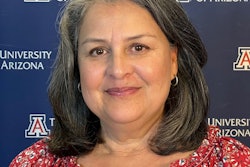Bridging the Digital Divide From the Sky
LINCOLN, Neb.
The conventional approach by non-profit groups and corporations to digital divide initiatives is to provide computers, Internet access and technology training to people in disadvantaged communities.
For academic institutions, however, attacking the Digital Divide means programs must combine a research agenda with the delivery of new technology and services to under-served communities. This is not an easy task given that schools often struggle to secure and maintain up-to-date information technology equipment and high-quality computing performance.
Nevertheless, officials with the American Distance Education Consortium here are confident they have a winning formula in a $4 million, three-year project funded recently by the National Science Foundation. The project, known as the Advanced Internet Satellite Extension Project, will allow consortium members to secure wireless, satellite-based distribution of high bandwidth Internet service for a wide variety of underserved communities and community-based locations.
“We are excited at the prospect of advancing the use of Internet technology in education and narrowing the gap between the education ‘haves’ and the ‘have nots’,” says consortium president Dr. Janet K. Poley.
The consortium, which is based at the University of Nebraska-Lincoln and has 58 member institutions, is leading the research and development effort aimed at wireless Internet solutions primarily for rural and remote learning centers. The project also will focus on improving Internet delivery to historically Black schools, tribal colleges and Hispanic-serving institutions.
The research agenda of the project is twofold: One part is to document the technical needs and performance of a satellite-based Internet delivery system; the second is to push distance learning research beyond comparative studies, which focus on the differences between online and traditional classroom learning.
“We’ll be looking at attributes of the medium. What kinds of learning can you facilitate with high bandwidth Internet?” says Dr. Valorie McAlpin, a principal project investigator and associate dean of the University of Maryland’s College of Agriculture and Life Sciences.
Specific research questions revolve around whether Internet services can be delivered without land lines at a reasonable cost to rural and under-served learning communities; and how to best assure that networking and learning applications developed among schools participating in the Internet 2 — the World Wide Web’s next incarnation — will be available to rural learning centers and colleges and universities not part of the Internet 2 consortium.
McAlpin says satellite-based distribution of the Internet represents one of the newest and fastest growing means of Internet access. Satellite-based Internet service is not known to be in significant use in higher education. One advantage of satellite distribution is that it can facilitate two-way transmission of dense data traffic at speeds equal to or faster than most wire-based systems.
A Brand New ‘Net
At the annual Educause conference in October, Dr. Dan C. Cotton, a project investigator and University of Nebraska faculty member, took to the stage and sang country and western-style songs about the digital divide in the United States.
“Access to the Internet/There’s no reason we should fret/‘Bout learning needs unmet/We’re gonna build a brand new ‘Net,” Miller crooned to about 100 Educause conference attendees in one tune during a presentation on the project.
To a large degree, country and western music may reflect the cultural orientation of many rural communities known to be lagging far behind more affluent urban and suburban locales in Internet and computer access. But project officials see the initiative as one that will cut across a number of cultures as they expect it to reach Black, Hispanic and American Indian communities.
The consortium’s membership, composed primarily of public land-grant research universities, has a strong rural focus because the organization grew out of university agriculture schools across the United States. Founded in 1990, the consortium arose initially as to help members distribute agriculture education and cooperative extension information via satellite television broadcasting technology, according to Poley, one of the group’s founders.
“We focused on cooperative extension and agricultural programs because it was clear that technology would have a role to play in distributing this information,” Poley says.
The organization has evolved to open its membership beyond agricultural schools and to include distance education units at colleges and universities. She notes, however, that minority-serving institutions have been part of the organization dating back to its founding. Historically Black North Carolina A&T State University and Tuskegee University were among the charter schools when the organization was launched. The consortium counts 10 HBCUs in its current membership.
“[The consortium] has been committed to minority participation and minority-serving institutions since its founding,” Poley says.
McAlpin, who is a former administrator at North Carolina A&T, says it was critical that the project include minority-serving institutions because agriculture schools and university extension services at those schools serve largely minority communities.
“[Minority-serving institutions] are the ones that work directly with underserved audiences,” she explains.
In addition to the consortium’s HBCU members, project officials are expecting to collaborate with schools participating in the Educause-administered Advanced Networking
Minority-Serving Institution project, another minority-focused computing network project funded by the National Science Foundation.
Project Promises
Dr. Marcy Johnson, director of distance learning at North Carolina A&T, says she envisions that their participation will enable the Greensboro, N.C.-based university to expand the delivery base of the school’s online degree programs and courses to communities where there’s low Internet access. North Carolina A&T, one of the first HBCUs to offer full online degree programs and courses, has an agriculture school, which offers cooperative extension services to farmers and residents across North Carolina. She says school officials are developing a proposal outlining community facilities where the university will seek to establish the satellite-delivered Internet access points.
Johnson says the urban-based campus likely will get a satellite dish connection for high bandwidth access at the school’s farm just outside Greensboro. Such a connection would significantly improve the ability of agriculture researchers to access complex research data over the Internet, according to Johnson.
“[The farm] doesn’t have fast Internet access. They rely on slow telephone modems to do research using the Internet,” Johnson says.
The project has the consortium partnered with the San Diego-based Tachyon company, which sells the two-way satellite-delivered Internet access system to farmers, businesses and other consumers. Tachyon’s satellites offer data rates of 300 Kbps to 2 Mbps.
© Copyright 2005 by DiverseEducation.com















